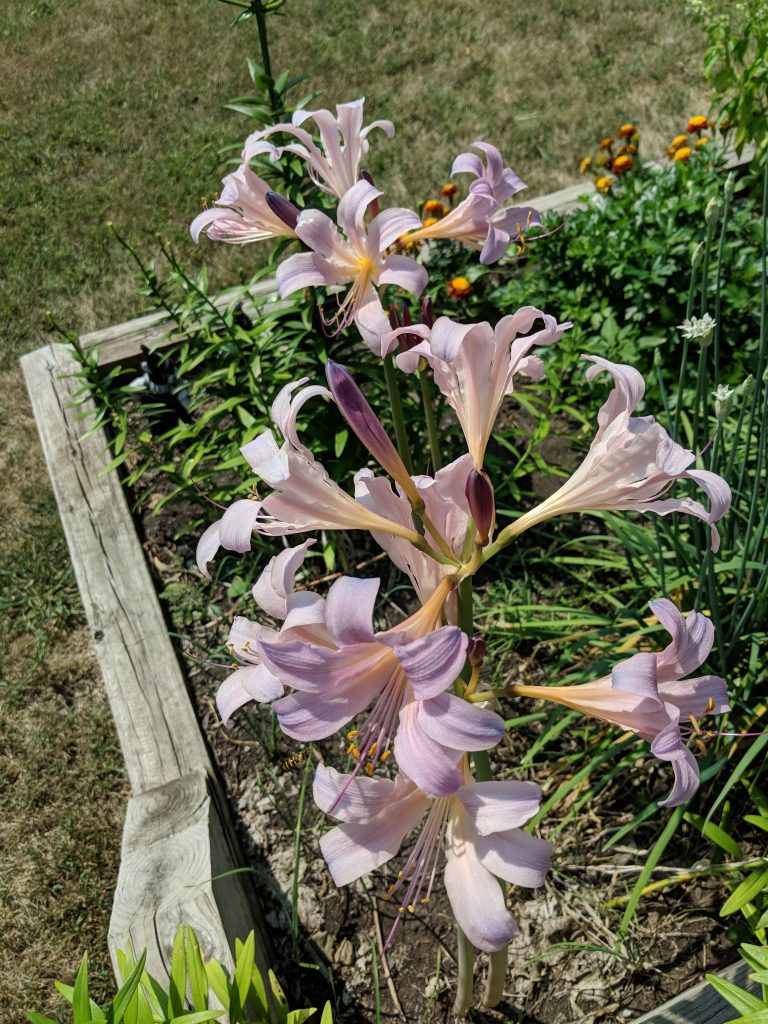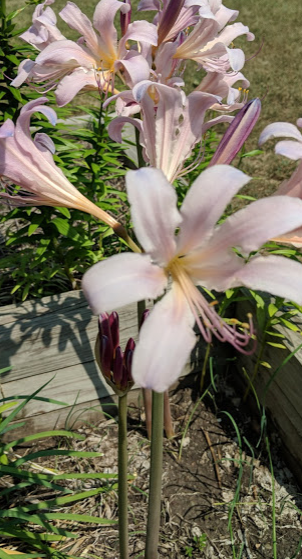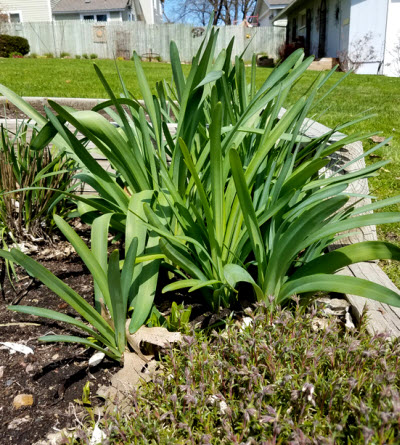Click below to listen to my 2 min. Garden Bite radio show: Resurrection lily
I moved into my current home in July of 2012 and found a plant I’d never seen before. It’s always an adventure to find plants the previous owner chose to plant, and deciding what you’ll do with those gifts.
For me it was the Resurrection Lily. The previous owner told me that I wouldn’t see this flower coming and I didn’t. I renovated the area in 2013 and have continued to do so. In the process I moved the lilies several times and at one point thought I’d killed them! But the name of this bulb is apt, it resurrected and is blooming now!

The resurrection lily goes by a variety of other common names, including ‘Belladonna’ lily, ‘Naked lady’ and ‘Magic’ lily.

A native of South Africa, the lily gets its name because in midsummer the leaves shrivel up as if the plant is dead. Then, much to my delight, large lily blossoms started growing on top of the bare stems.

This member of the Amaryllis family is said to be hardy to zone 5. Well, it survived the winter of 2017/18, a lengthy, cold winter here, in zone 4. The photo below is from August of 2012 BEFORE I renovated the area….

The resurrection lily prefers full sun but will tolerate some shade. The stalk grows to over 2 feet tall and produces about 6 flowers per stalk. The color is a pale pink to almost purplish color.
Plant bulbs 5-6” deep and 6” apart in fall. Mulch the first winter while the bulbs establish and to prevent heaving. This lily will naturalize by bulb-offsets.
Most of the websites say to give your resurrection lily moderate water during the summer. I never gave this plant a thing and even during one of the hottest summers we’ve had in decades, it’s produced. This year, with all the rain, it’s also come back. I know that I will see more yet next year!
If you can find a source for the bulbs locally, try that first, however here are a couple of resources online for cooler climates:
Heritage Flower Farm – Wisconsin
Old House Gardens – Michigan
